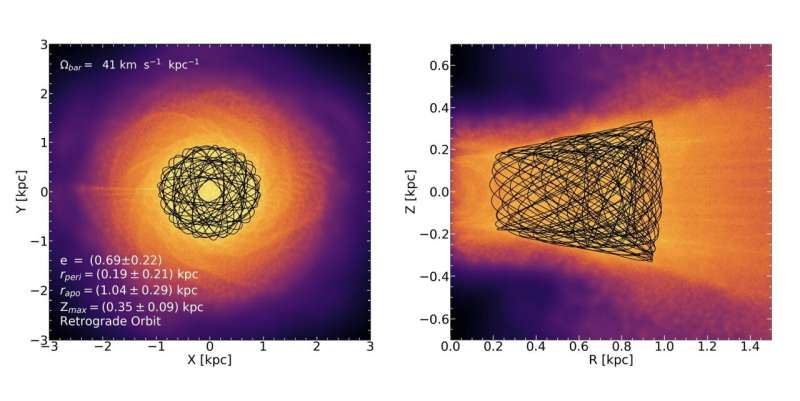January 3, 2024 report
This article has been reviewed according to Science X's editorial process and policies. Editors have highlighted the following attributes while ensuring the content's credibility:
fact-checked
preprint
trusted source
proofread
Globular cluster VVV CL002 is falling down to the galactic center, study finds

Using the Magellan Clay telescope in Chile, astronomers have performed high-resolution spectroscopic observations of a galactic globular cluster known as VVV CL002. They found that the cluster is falling down to the Milky Way's center. The discovery was reported in a research paper published December 26 on the pre-print server arXiv.
Globular clusters (GCs) are collections of tightly bound stars orbiting galaxies. Astronomers perceive them as natural laboratories enabling studies on the evolution of stars and galaxies. In particular, globular clusters could help researchers to better understand the formation history and evolution of early-type galaxies, as the origin of GCs seems to be closely linked to periods of intense star formation.
Located some 23,800 light years away, VVV CL002 is a relatively low-luminosity GC discovered in 2011 with the VISTA Variables in the Via Lactea (VVV) survey. With a galactocentric distance of approximately 1,300 light years, VVV CL002 is assumed to be closest GC to the center of the Milky Way.
Recently, a team of astronomers led by Dante Minniti of the Andrés Bello Catholic University in Santiago, Chile, decided to conduct near-infrared high-resolution spectroscopy of VVV CL002 in order to find out how the cluster is surviving so close to the galactic center without being tidally disrupted. For this purpose, they employed the Warm INfrared Echelle spectrograph to Realize Extreme Dispersion and sensitivity (WINERED) at the Magellan Clay telescope.
The observations found that VVV CL002 has a retrograde orbital configuration of relatively high eccentricity of 0.69, with perigalactocentric and apogalactocentric distances of 619 and 3,400 light years, respectively, well inside the bulge. It turned out that the orbit of VVV CL002 is tighter than the orbits of all other known GCs.
The study delivered important insights into the chemical composition of VVV CL002. It was found that the cluster has a metallicity at a level of -0.54 and showcases high alpha-element abundance. This indicates that VVV CL002 is an old GC that formed together with other clusters.
Therefore, according to the authors of the paper, VVV CL002 was formed outside the central region of the Milky Way but is now falling down to the galactic center.
"This brings us to a scenario where VVV CL002 was formed at a relatively large stellar birth radius and started to fall towards the center recently. It is probably doomed to continue spiraling into the inner parsecs and be destroyed in the not-so-distant future," the researchers explained.
The astronomers underlined that further high-resolution observations of VVV CL002 could be essential in order to better understand the survival and migration mechanisms of galactic globular clusters.
More information: D. Minniti et al, The globular cluster VVV CL002 falling down to the hazardous Galactic centre, arXiv (2023). DOI: 10.48550/arxiv.2312.16028
Journal information: arXiv
© 2024 Science X Network





















